배터리를 쌓는 것이 안전합니까??
에너지 저장 시스템을 계획 할 때, 특히 싱가포르의 많은 가정 및 기업과 같은 공간 의식 환경에서, 수직 스태킹은 공간을 절약하는 논리적 인 방법처럼 보입니다.. 그러나 실제로이 강력한 배터리 장치를 쌓는 것이 안전합니까?? 이것은 중요한 질문입니다, 그리고 대답은 확고하고 조건부 "입니다."
이 목적을 위해 특별히 설계되고 인증 된 경우 배터리를 쌓는 것은 안전합니다.. 최신 적층 가능한 배터리 저장 시스템은 기계적 안정성으로 설계되었습니다., 전기 안전, 열 관리를 염두에두고 있습니다. 쌓기 위해 설계되지 않은 배터리를 임의로 쌓는 것은 매우 위험하며 단락으로 이어질 수 있습니다., 과열, 불안정, 그리고 불. 전문 솔루션이 핵심입니다.
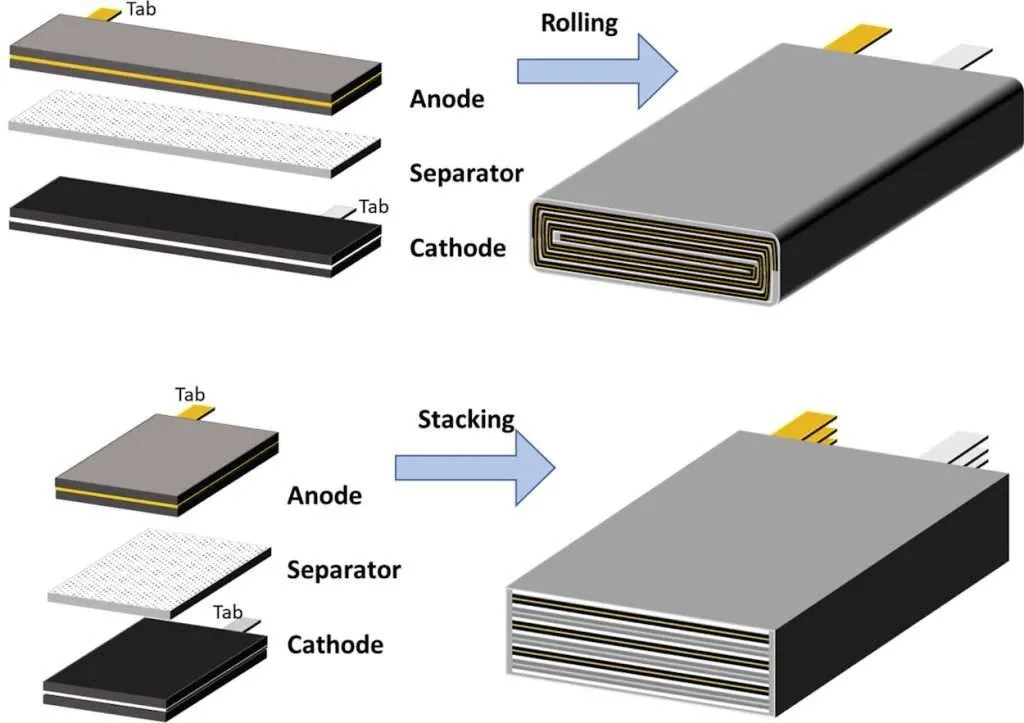
~에 Gycx 솔라, 안전은 우리가 설계하는 모든 시스템의 기초입니다. 그만큼 쌓을 수 있는 배터리 우리가 사용하는 제품은 안전 기능을 위해 특별히 선택되며 엄격한 표준에 따라 설치됩니다.. 역학에 더 깊이 빠져 들자, 이익, 스태킹 배터리의 안전 프로토콜.
스태킹 배터리는 무엇을합니까??
현대 에너지 저장 솔루션이 종종 "스택 가능"으로 설계된 이유" 시스템? 이 모듈 식 접근법의 실제 기능과 이점은 무엇입니까?? 스태킹 배터리는 에너지 저장 설계의 확장 성과 효율성을 달성하는 것입니다..
"스태킹" 설계된 배터리 모듈을 사용하면 가능합니다 더 큰 것을 만듭니다, 표준화 된 빌딩 블록의 맞춤형 에너지 저장 시스템. 전기, 즉, 모듈을 연결할 수 있습니다 총 에너지 용량을 높이기 위해 평행합니다 (KWH에서) 그리고 현재 출력, 또는에서 시스템의 총 전압을 높이기위한 시리즈. 육체적으로, 그것은 고도로 조직 된 것을 허용합니다, 공간 효율성, 조밀 한 설치, 우주 제약 주택이나 사업에서 주요 이점입니다..
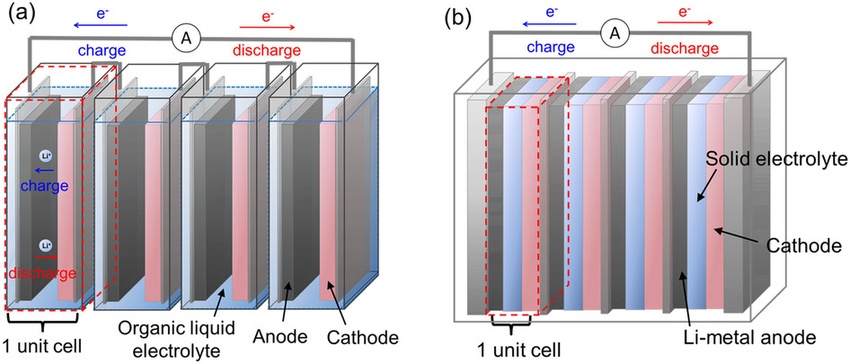
더 깊이 다이빙하십시오: 모듈 식 접근법의 목적
스택 가능한 배터리 시스템의 핵심 기능은 다음과 같습니다:
- 확장성: 이것이 주요 이점입니다. 현재 요구와 예산을 충족하는 용량으로 시작할 수 있습니다., 에너지 소비가 증가하면 나중에 더 동일한 모듈을 쉽게 추가합니다. (예를 들어, 전기 자동차를 구입하는 경우). 이 "유료"" 모델은 유연하고 경제적입니다.
- 사용자 정의: 시스템 설계자로서 고유 한로드 프로파일에 필요한 정확한 KWH 용량을 갖춘 배터리 뱅크를 만들 수 있습니다., 하나 또는 두 개의 고정 크기로 제한되는 대신.
- 공간 효율: 수직으로 쌓아서, 직접 (그것을 위해 설계된 경우) 또는 전문 캐비닛 또는 19 인치 랙 내에서, 아주 작은 바닥 발자국에 많은 양의 에너지 저장을 수용 할 수 있습니다.. 이것은 아파트에서 매우 중요합니다, 콘도, 또는 공간이 프리미엄 인 비즈니스.
- 설치 및 서비스의 용이성: 목적으로 만들어진 커넥터가있는 표준화 된 모듈은 설치 프로세스를 단순화 할 수 있습니다.. 한 모듈이 몇 년 동안 문제가있는 경우, 전체 배터리 뱅크를 해체하지 않고도 서비스를 받거나 교체 할 수 있습니다..
대부분의 GYCX 태양열 주거 및 상업 시스템, 우리는 평행 48V에 스태킹을 사용합니다 LFP1. (리튬 철 포스페이트) 모듈, 고객의 태양열 어레이와 짝을 이루는 완벽한 양의 KWH 스토리지 구축.
스태킹 배터리는 전압을 증가시킵니다?
이것은 일반적인 전기 문제입니다. 배터리를 하나씩 배치하는 물리적 작용은 시스템의 전압을 자동으로 증가시킵니다.?
아니요, 물리적으로 스태킹 배터리는 본질적으로 전압을 증가시키지 않습니다. 배터리 뱅크의 전압은 모듈의 방식에 따라 결정됩니다. 전기적으로 연결되어 있습니다. 전압을 증가시키기 위해, 모듈을 연결해야합니다 시리즈. 연결하면 평행한, 이는 태양 저장 용량을 증가시키는 데 더 일반적입니다, 전압은 동일하게 유지됩니다, 그러나 용량 (앰프-시간 또는 아) 증가합니다.
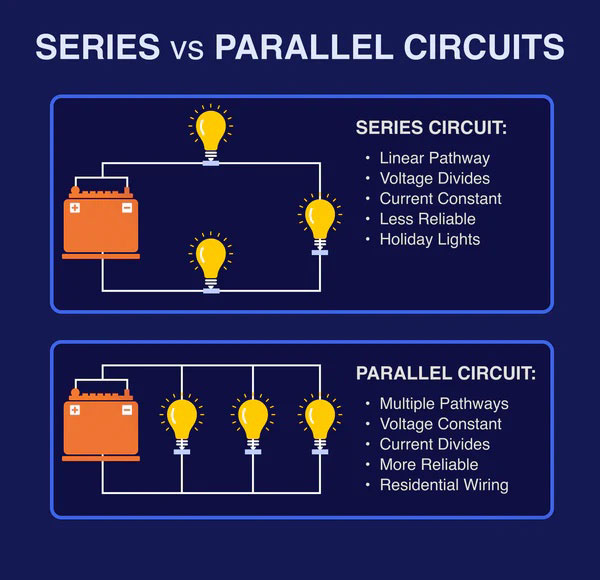
더 깊이 다이빙하십시오: 스태킹의 전기 현실
두 가지 기본 연결 유형을 명확히하겠습니다:
- 시리즈 연결 (전압을 증가시키기 위해):
- 당신은 긍정적 인 것을 연결합니다 (+) 첫 번째 배터리의 터미널은 음수입니다 (-) 두 번째 터미널, 등, 체인 생성.
- 총 전압은 개별 배터리 전압의 합입니다.. (예를 들어, 시리즈의 2 개의 48V 모듈 = A 96V 시스템).
- 총 AMP 시간 (아) 용량은 단일 모듈의 용량으로 남아 있습니다.
- 병렬 연결 (용량을 높이기 위해):
- 당신은 모든 긍정적 인 것을 연결합니다 (+) 터미널과 함께 모든 부정 (-) 터미널 함께.
- 총 전압은 단일 모듈과 동일하게 유지됩니다. (예를 들어, 2 개의 48V 모듈을 병렬로 연결하면 48V 시스템이 발생합니다.).
- 총 AMP 시간 (아) 용량은 개별 모듈 용량의 합입니다 (예를 들어, 평행 한 2 개의 100AH 모듈 = A 200AH 은행).
대부분의 최신 태양 에너지 저장 시스템, 처럼 쌓을 수 있는 배터리 솔루션 GYCX SOLAR가 제공합니다, 목표는 대용량 48V 은행을 건설하는 것입니다. 그러므로, 우리는 48V 모듈을 랙에 물리적으로 쌓아서 원하는 총 KWh를 달성하기 위해 전기적으로 병렬로 연결합니다..
파워 스택 배터리가 더 오래 지속됩니다?
이것은 훌륭하고 통찰력있는 질문입니다. 더 큰 "파워 스택을 만듭니다" 배터리를 더 추가하면 실제로 시스템을 몇 년과 주기로 더 오래 지속시킵니다.? 대답은 미묘하고 강력한 "예입니다."
개별 배터리 모듈은 동일한 내재 수명을 가지고 있지만, ㅏ 더 큰, 올바르게 크기의 스택 배터리 시스템은 실제로 훨씬 더 오래 지속될 수 있습니다. 더 작은 하나보다 동일한 하중에 전원을 공급합니다. 일상적인 작업이 더 많은 셀에서 공유되기 때문입니다., 이어지는 각 모듈의 얕은 방전 사이클. 배터리 만 배전됩니다 30% 매일 방전되는 배터리보다 훨씬 더 많은 사이클을 견뎌냅니다. 80% 매일. 그러므로, 각 배터리의 일일 스트레스를 줄임으로써, 전체 시스템의 운영 수명이 확장됩니다.
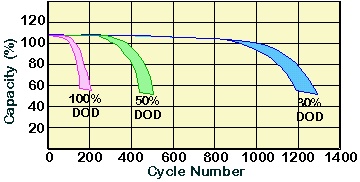
더 깊이 다이빙하십시오: 확장 성의 장수 보너스
비유를 사용합시다. 40kg의 식료품을 가지고 다녀야한다고 상상해보십시오. 한 사람이 그렇게한다면, 무거운 긴장입니다. 두 사람이 짐을 공유하면 (20각각 kg), 각 사람의 긴장은 훨씬 적습니다. 배터리도 비슷한 방식으로 작동합니다.
- 사이클 수명 대. 방전 깊이 (국방부): 모든 품질 배터리에는 다른 DoD 수준에서주기 수명을 보여주는 사양 시트가 있습니다.. 예를 들어, 고품질 LFP 배터리는 평가 될 수 있습니다:
- 3,000 사이클 80% 국방부
- 6,000 사이클 50% 국방부
- 실제 예:
- 집으로 사용한다고 가정합니다 5 매일 밤 배터리에서 에너지의 KWH.
- 시나리오 a (하나의 10kWh 배터리): 배터리를 배출합니다 50% 매일 밤 (5KWH 사용 / 10KWH 용량). 당신은 대략 기대할 수 있습니다 6,000 사이클, 또는 이상 16 수년간 매일 사용합니다.
- 시나리오 b (하나의 6kWh 배터리): 배터리를 거의 배출합니다 83% 매일 밤. 이 더 깊은 사이클은 배터리가 지속된다는 것을 의미 할 수 있습니다 3,000 사이클, 아니면 그냥 끝났습니다 8 연령.
- 스태킹의 이점: 더 큰 것을 설치함으로써, 쌓인 시스템 (예를 들어, 15KWH 또는 20kWh), 당신의 5kWh 야간 사용량은 훨씬 얕은 DOD를 초래합니다. (33% 또는 25%). 이로 인해 배터리는 스트레스가 매우 낮습니다, 보증 기간을 넘어 잠재적주기 수명을 크게 확장.
GYCX 태양 이야기: "우리는 항상이 장수 혜택을 고객에게 설명합니다. 약간 더 큰 쌓을 수있는 배터리 뱅크에 투자하는 것은 종종 배터리 교체에 대해 생각할 필요가 없다는 것을 의미합니다., 아주 오랜 시간. 용량과 내구성에 대한 투자입니다."
배터리를 얼마나 높게 쌓을 수 있습니까??
설치를 계획 할 때, 특히 소형 공간에서, 물리적 한계를 아는 것이 필수적입니다. 이 배터리 모듈을 실제로 얼마나 높게 쌓을 수 있습니까??
스태킹 배터리의 최대 높이는 전적으로 제조업체의 사양 및 설치 방법 (직접 스태킹 vs. 랙 장착). 배터리 모듈의 경우 직접 용으로 설계되었습니다, 연동 스태킹, 제조업체는 명확한 한도를 진술합니다, ~와 같은 4, 6, 또는 8 높은 단위. 서버 랙 배터리 용, 한계는 장비 랙 또는 캐비닛의 높이 및 인증 중량 용량 그들은 설치되어 있습니다. 이 지정된 한계를 초과하는 것은 결코 안전하지 않습니다.
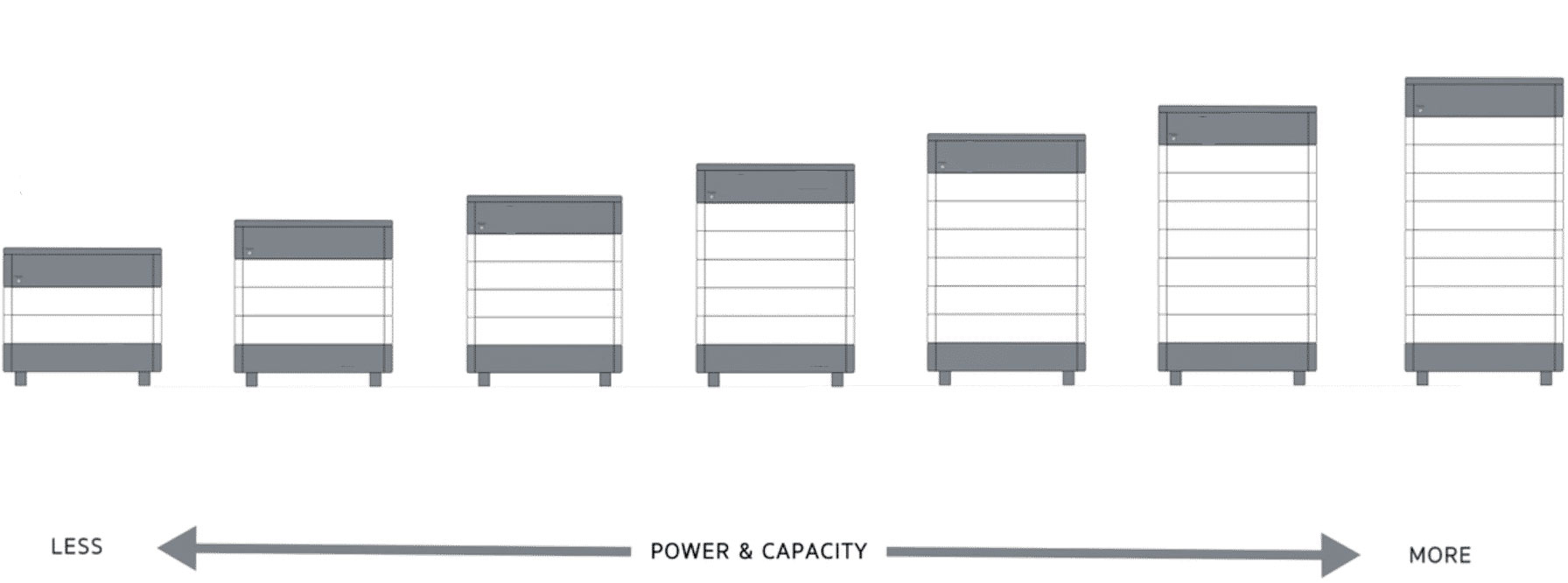
더 깊이 다이빙하십시오: 구조 및 안전 한계를 존중합니다
안전한 스태킹 높이를 결정하는 방법은 다음과 같습니다:
- 직접 스태킹: 배터리 모듈이 연동 케이싱으로 설계된 경우, 제품의 설치 설명서는 절대 안내서입니다. 한 레벨에 쌓을 수있는 최대 모듈 수를 지정합니다., 안정적인 표면. 이 한계는 케이싱의 구조적 무결성과 결과 타워의 안정성을 기반으로합니다..
- 랙/캐비닛 스태킹: 이것은 더 큰 스택을 구축하는 가장 일반적이고 전문적인 방법입니다..
- 랙 높이 (U 공간): 랙은 "u" 단위 (1u = 1.75 신장). 24U 랙은 42U 랙보다 수직 공간이 적습니다.. 물리적으로 적합한만큼 많은 모듈을 쌓을 수 있습니다., 환기를위한 적절한 공간을 떠납니다.
- 체중 용량: 이것은 중요합니다, 종종 간과 된 한도. 표준 장비 랙에는 특정 중량 용량이 있습니다 (예를 들어, 500 킬로그램, 1000 킬로그램). 각 배터리 모듈은 무겁습니다 (예를 들어, 40-50 킬로그램). 계획된 모든 모듈의 무게를 합산하고 랙의 인증 한 한계를 초과하지 않도록해야합니다..
- 고정: 안전을 위해, 크거나 무거운 선반, 특히 싱가포르와 같은 곳에서, 바닥에 단단히 고정되어야합니다 (그리고 때때로 벽) 팁의 위험을 방지합니다.
- 열 고려 사항: 캐비닛에 높은 배터리를 쌓는 것도 열 소산에 대한 생각이 필요합니다.. 열 상승, 따라서 상단의 모듈이 더 따뜻해 질 수 있습니다. 전문 배터리 캐비닛은 종종 스택 전반에 걸쳐 일관된 온도를 보장하기 위해 환기 또는 팬 시스템으로 설계되었습니다., 우리의 뜨거운 기후에서 배터리 건강에 중요한 것은.
Gycx Solar에서, 설치 프로세스에는 이러한 요인에 대한 철저한 평가가 포함되어 있습니다.. 우리는 모든 것을 보장합니다 쌓을 수 있는 배터리 보관함 시스템은 전기 소리뿐만 아니라 장기적으로 기계적으로 안정적이고 안전한 방식으로 설치됩니다..
그래서, 배터리를 쌓는 것이 안전합니까?? 예, 현대를 사용할 때, 모듈식 쌓을 수 있는 배터리 해당 목적을 위해 특별히 설계되고 전문적으로 설치된 시스템. 스태킹을 통해 강력한 것을 만들 수 있습니다, 확장 가능한 에너지 저장 솔루션. 스택을 올바르게 조정하여, 운영 수명을 연장 할 수도 있습니다.
안전한 방법을 탐색하는 데 관심이 있다면, 확장 가능, 오래 지속되는 쌓을 수있는 배터리 시스템은 가정이나 비즈니스에 전원을 공급할 수 있습니다., GYCX Solar의 우리 팀은 당신을 안내하는 전문 지식을 가지고 있습니다.. 전문 상담을 위해 오늘 저희에게 연락하십시오!
LFP의 개념을 이해하면 배터리 관련 데이터 개념을 더 잘 비교하고 이해하는 데 도움이됩니다.. 이것은 회사의 요구에 가장 적합한 제품을 선택하는 데 도움이됩니다.. ↩
